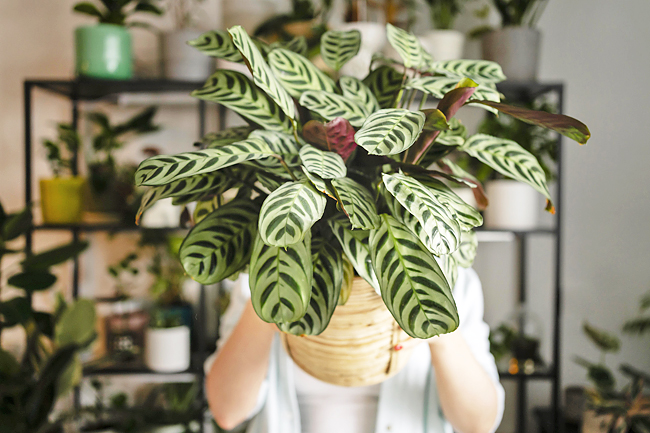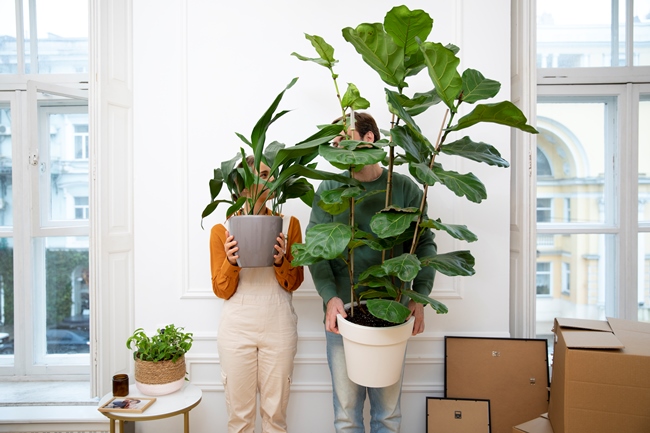Are your houseplants going hulk? Learn the tricks to wrangle your garden giants gone wild.
Picture this: You wake up in the morning and walk outside your verandah, for your daily stroll about the garden.
There are hoyas hanging haphazardly, tendrils desperately clinging to any available support within its reach. There are also huge philodendrons standing before you, its foliage no shorter than a person’s forearm, its width covering a human head.
You’re walking through a garden full of giants and you may feel like it’s a testament to your allegedly green appendages, but then you notice a few things that don’t seem quite right. Those large philodendrons? The leaves on the bottom nodes of one are yellowing, the medium of another is bone-dry despite being watered the day before. And there’s that other one that just pushed out a leaf that is significantly smaller than usual.

In a bind
These are the symptoms of plants that are literally too big for their britches; plants that are root-bound, a condition that should be common if you’ve been gardening long enough.
As the term suggests, a root-bound plants is one that has outgrown their container, causing the roots to be tightly packed and growing in circles within the pot.
With their yellowing leaves and stunted appearance, a root-bound plant is always a sight for sore eyes.
If you are noticing any of these characteristics in your plants, then you are faced with an age-old question that every gardener faces as they mature in their plant journey. To repot or not to repot? And subsequently, to prune or not to prune?
First things first, however, good job! You’ve cared for the plant well enough for it to live and prosper that its growing size has become a point of tension in your personal life. However, repotting root-bound plants require not only care and delicate touch but also some forethought and intention.
Do you want your plants to grow bigger? Do you want them to grow bushier? Or do you want them to stay relatively unchanged? Regardless of your decision to repot or give a big prune, the root-bound plant must go through some prep in order to give it the best chance of survival in its new phase of life.
A root spa
When handling a root-bound plant, the first order of business is to examine the root ball – the dense mass of roots that have wrapped around each other inside the pot.
Try to gently loosen the outer layer of the roots, the plant’s literal threads of life. I must stress again that a little tenderness can go a long way.
Before repotting, soak the root ball in water for about an hour. This helps to hydrate the roots and makes them more pliable, easing the transition to the new pot.
Feel free to enhance the process by adding a few drops of liquid fertiliser during the soaking process, to give the plant a further boost. Opt for a mild chemical input with a slightly higher ratio of potassium. This promotes robust root growth and ensures your plant’s overall well-being.
Some tweezers, old chopsticks or even your fingers can be tools that can help you to tease apart the roots gently. Additionally, trim any long, circling roots and keep an eye out for mushy roots. They’re dead, and if not removed, they can spread diseases and cause the plant to rot.
These gentle snips actually encourage the growth of new roots. For the best results, use sharp and clean scissors or pruning shears to make those precise cuts.
Grow and steady
If you are looking to let your plants grow to a kaiju-like proportion, upgrading their pots is the logical next step.
But let’s recall my earlier advice about intentionality when repotting. It’s important to consider the desired outcome for your maturing plant. The standard and safe approach is to select a pot that’s one and a half times larger than its original one.
When plants are root-bound, their roots are densely packed, and repotting can lead to root damage, potentially causing the plant to go into shock.
Patience and gentle care are key during this critical transition. Some rudimentary gardening knowledge also helps. The essence of the ‘1.5x’ rule for repotting lies is allowing the plant the time and space it needs to heal and minimising the stress as it adapts to its fresh surroundings.
Choosing a pot much larger than the plant seems tempting, but the excess soil that comes with it will retain moisture for too long, leading to root rot. Ensuring the pot size matches your plant’s roots helps it drink water quickly and breathe properly.
This balance is vital for healthy growth so make sure to prepare a well-draining potting mix suitable for the specific plant type. A mix of potting soil, perlite and organic matter like compost or coco chips work well for most plants.
The only catch with the ‘1.5x’ repotting method is that you’ll likely find yourself back in the garden for another session in the future. Plants, once rejuvenated, tend to grow rapidly. But let me assure you, the end result – a beautiful, fully matured plant – makes every bit of effort absolutely worthwhile.

Is bushy better?
Being root-bound hampers growth and as mentioned previously, leads to the emergence of tiny ‘baby’ leaves that don’t do justice to your garden’s aesthetics.
If you find your plant in this situation, a strategic cut-and-repot is in order. Knowing where to cut is key. Ideally, trim just before the baby leaf emerges, or simply prune up to the last large mature leaf – it’s an easier marker.
Repot the remaining plant or the ‘bottom cutting’ following the ‘1.5x’ rule. When you make that strategic cut, coupled with a refreshing repot, the plant often responds by producing new shoots, or “pups”.
These can sprout from upper nodes or even beneath the soil. This natural response not only rejuvenates the plant, offering a chance at a fuller look just from one plants.
Alternatively, those nodes you’ve trimmed can be propagated to create new plants, and with a second repotting session to anticipate, the propagation becomes your secret weapon.
As you find an even larger container, these propagated plants can be combined, creating a bushy garden behemoth, possibly becoming the next stunning centrepiece of your outdoor haven. – Wardi Wasil





